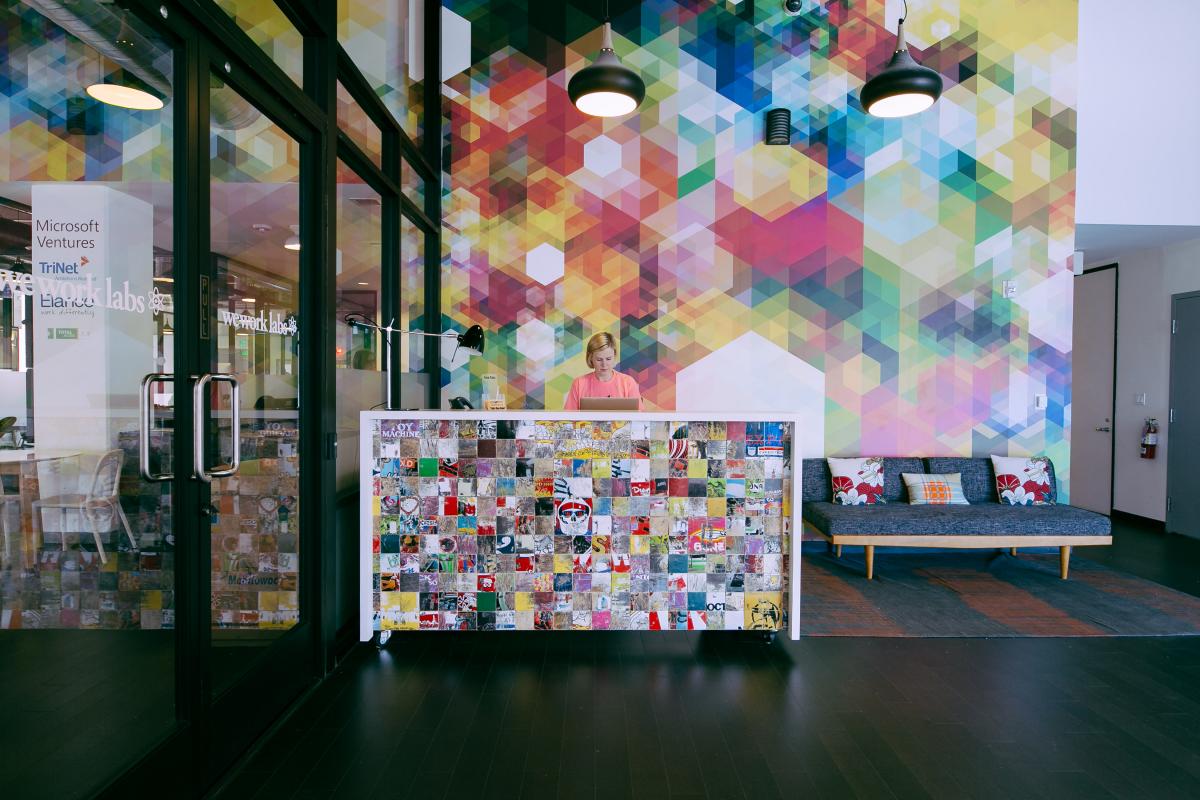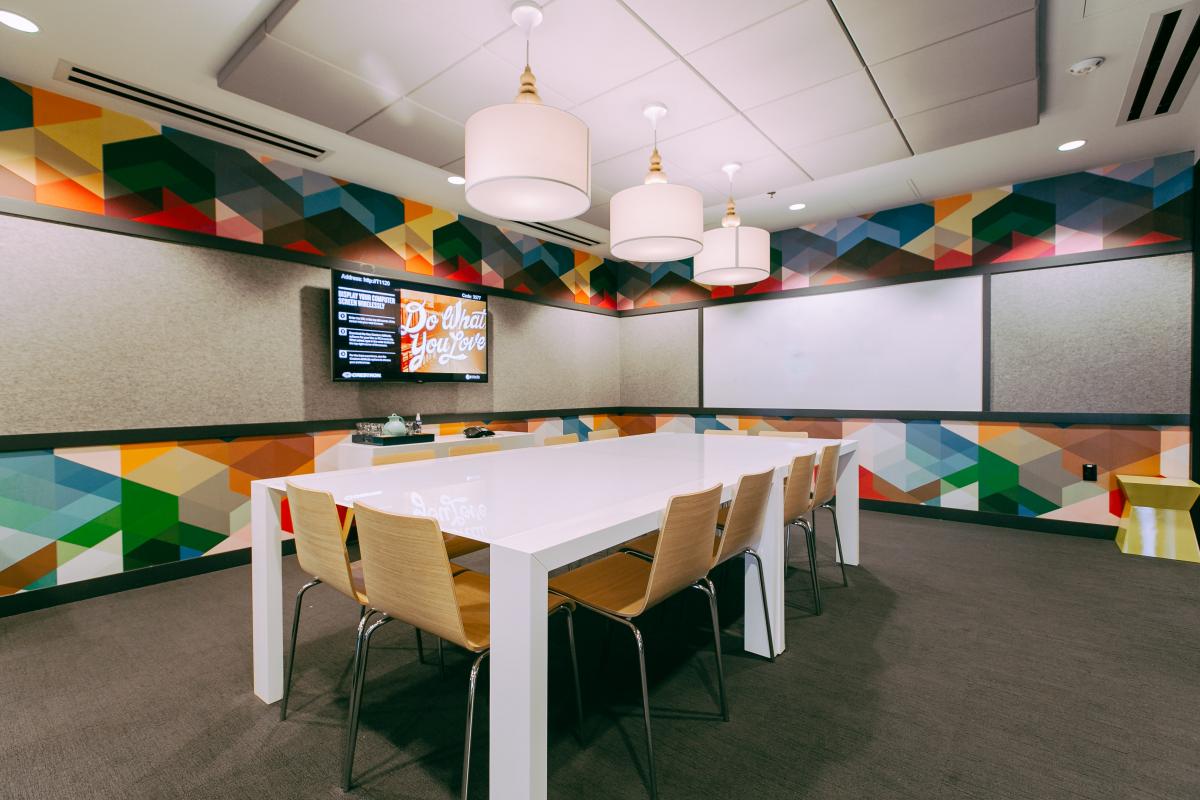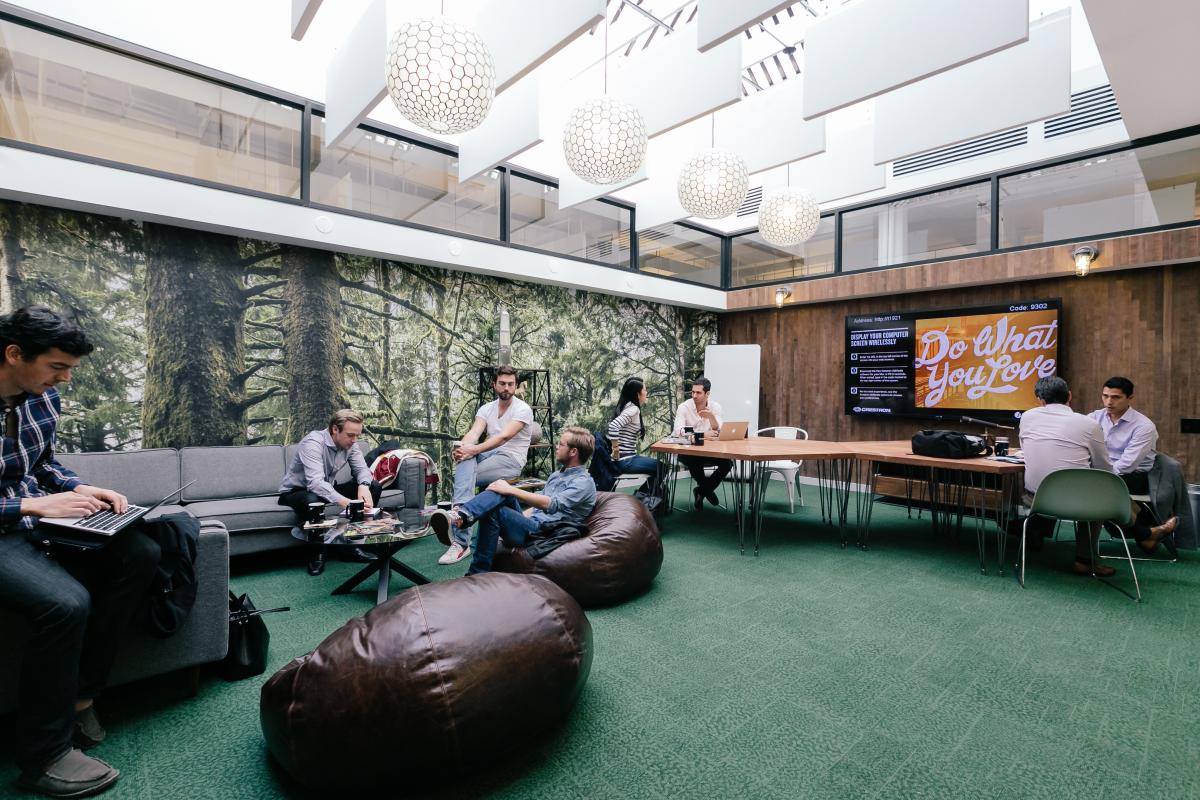
Founded in 2010 by Adam Neumann and Miguel McKelvey, WeWork’s valuation has skyrocketed to over $16 billion; surely, they must be doing something right? The company, which provides shared workspace and services for entrepreneurs, freelancers, startups, and small businesses, now has more than 90 locations and 50,000 members. By the end of this year, WeWork expects to be in nearly 30 cities in 12 countries.
WeWork provides its members with health care, payment processing, IT support, payroll, legal assistance, education, and training. The company, however, looked beyond these traditional offerings and tapped into the largely unrecognized zeitgeist of millennial workers, creating for them hip, meticulously designed office spaces for collaboration and an invigorating, all-inclusive sense of community (as well as free beer and food during its famous Thursday happy hours).
 The WeWork app, for example, gives members access to an entire community of creators and entrepreneurs, allowing them to discuss ideas, find or list opportunities, book conference rooms, and a whole lot more. "If you look at our app for one hour—without touching it, just reading it—you could look at your city, your country, the whole world, and see people minute by minute posting their specific needs—for a developer, a co-founder, whatever," Neumann told inc.com. "And you'd see eight-to-ten immediate [responses] coming in, all with high-quality references. You can become multinational by the press of a button."
The WeWork app, for example, gives members access to an entire community of creators and entrepreneurs, allowing them to discuss ideas, find or list opportunities, book conference rooms, and a whole lot more. "If you look at our app for one hour—without touching it, just reading it—you could look at your city, your country, the whole world, and see people minute by minute posting their specific needs—for a developer, a co-founder, whatever," Neumann told inc.com. "And you'd see eight-to-ten immediate [responses] coming in, all with high-quality references. You can become multinational by the press of a button."
While the business model of WeWork seems straightforward, its ability to gather and process big data sets it apart from more established real estate enterprises. In reality, many still think of the company as a “tech startup.” Recently, WeWork bought Case Inc., a New York-based architectural studio that specialises in Building Information Modeling. Daniel Davis, an RMIT University PhD graduate in computational design and former senior researcher at Case, is now WeWork’s lead researcher.

During his keynote speech at the Design Modelling Symposium in Copenhagen, Davis related how usermetrics revealed flaws in the design of their new Case office. “We had spent a lot of time designing the kitchen area in the new Case office,” he said. “We had this vision as designers that everyone would hang out there and have these coincidental meetings, but it ended up a space where people spent the least amount of time.
“For me, the frustration with this research is that we could get it to this stage—we could say that these spaces were not really used or there was some fundamental problem with the architecture, but we weren’t really ever going to redevelop the Case office. No one was ever going to pay us to redesign the kitchen, so we got it to this stage where we identified the problem but couldn’t do anything about it.”
Davis then recounts the sense of liberation when he joined WeWork. Now, design flaws could be remedied—rapidly, as a matter of policy—with the deployment of data-gathering methods developed by the company.
“They have this data,” he told the symposium audience, “about how many people are in the building and where they are in the building. We also have this booking data from the WeWork app—who’s booked a room, how big the room is, what other kinds of rooms they’ve booked before—and we can start interrogating this data to make the design of the WeWork spaces better.”
 In his blog “Spatial Analytics: New Ways of Understanding Architecture at WeWork R&D,” Davis gives us a glimpse into WeWork’s professed fanaticism about analysing member feedback: “After a member uses a conference room, for instance, a screen pops up on the WeWork app asking them to rate their experience in the room—much like how you would rate a ride with Uber. This feedback is immediately sent to the building’s Community Manager, which allows our teams to quickly remedy any urgent problems, such as missing whiteboard markers.”
In his blog “Spatial Analytics: New Ways of Understanding Architecture at WeWork R&D,” Davis gives us a glimpse into WeWork’s professed fanaticism about analysing member feedback: “After a member uses a conference room, for instance, a screen pops up on the WeWork app asking them to rate their experience in the room—much like how you would rate a ride with Uber. This feedback is immediately sent to the building’s Community Manager, which allows our teams to quickly remedy any urgent problems, such as missing whiteboard markers.”
A daily summary of the reviews is then dissected by the designers of WeWork. “Imagine being a designer and getting an email every day containing feedback from people who have used a conference room you’ve designed: every day, you read about the acoustics and the furniture you specified; every day, you hear directly from the people you are designing for. Over time, you develop an empathy that makes you acutely aware of how your designs impact the people who inhabit them. It is a level of feedback that is virtually non-existent in the rest of the architecture industry.”
Crunching vast amounts of data into actionable design solutions is one of WeWork’s most underrated competitive advantages. Writes Davis: “To give one example from this research, we have been analyzing the size of meetings in the conference rooms. In other words, what is the average size of a meeting in a four-person conference room? In a six-person room? In a twelve?
“Your intuition might be that a four-person room tends to have four people in it, and a twelve-person room tends to have twelve people in it. Before this research, that was my intuition.”
 Sometimes, however, the intuition of even the brightest minds can be erroneous. In fact, WeWork’s Research & Development team learned that the average meeting involves just two or three people, regardless of room capacity. “For our designers, this type of insight sparks all sorts of ideas about how we could improve the meeting experience at WeWork.”
Sometimes, however, the intuition of even the brightest minds can be erroneous. In fact, WeWork’s Research & Development team learned that the average meeting involves just two or three people, regardless of room capacity. “For our designers, this type of insight sparks all sorts of ideas about how we could improve the meeting experience at WeWork.”
WeWork’s relentless scrutiny of data, and more importantly, its willingness to have its design principles shaped by the resulting conclusions, is compelling architects and interior designers around the world to recalibrate what constitutes successful design. Before, it meant fulfilled deliverables that left clients happy and the eventual inhabitants of a space initially contented. WeWork dared to disagree.
Writes Davis: “As WeWork grows, we believe there’s value in investing time to listen to our members and analyze our buildings. It is something that almost no architect can do, and it is something we hope will differentiate the quality of design and experience at WeWork locations.”
It is a radical redefinition of the desired design outcome. Whereas once the aspiration was to adhere as closely as possible to a proposal collectively agreed upon, WeWork asserts that unlocking the potential of a space can truly occur only after the ribbon-cutting ceremony. ![]()
This article was first published by Woodform Architectural. The original version can be viewed here.

